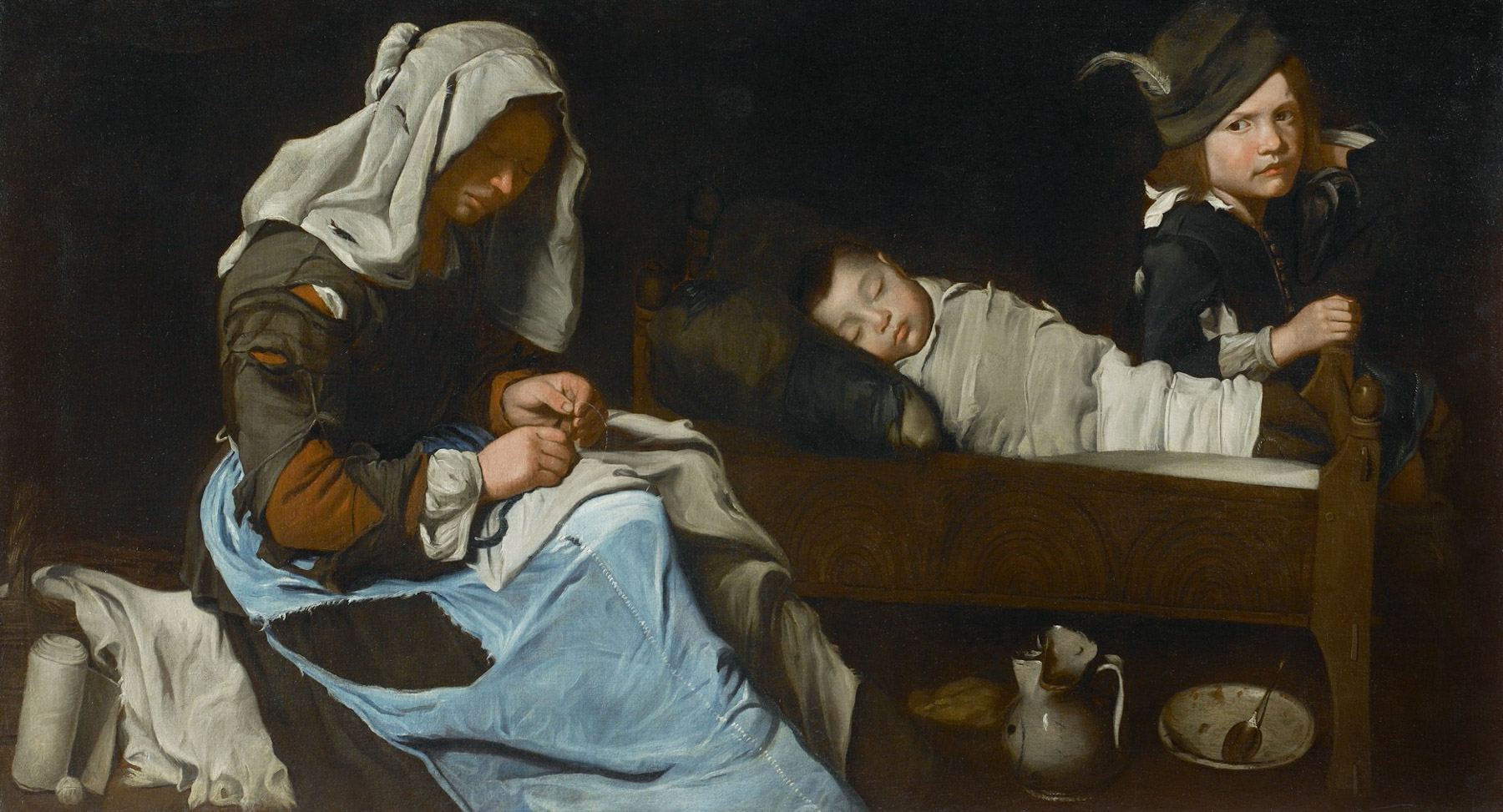Origin of Denim: The 17th Century, Part II
Jeans have been in fashion since the 1950s, but the discovery of three paintings from the 1650s prove that denim was widely worn as workwear already 350 years earlier.
One of the most innovative artists in the 17th-century landscape, an unknown North Italian painter, was dubbed the Master of the Blue Jeans due to the recurring presence in his works of poor people dressed in clothes made of blue denim from Genoa (Gênes = jeans).
The paintings show a young boy wearing a tattered dark blue jacket that seems to be made of denim while in another picture a beggar woman wears a torn denim skirt. The third painting shows a peasant seamstress wearing a blue apron that is not only made of denim, but the fabric is also faded. And the best part – according to curators, the blue tint of the fabric was painted with the exact same indigo as used to dye today’s denim.
“The works are very attached to the detail of clothing – it was very rare for a painter to characterise the poor with such detail,” said curator Gerlinde Gruber who helped to identify the anonymous artist’s works. “There is blue jean in every painting except one,” she added. “We have accounts from an English tailor saying that his fabric came from Genoa, and that is the origin of jeans,” said Gruber. “But this gives us new documentary proof of a historical reality that has been forgotten.”
“In people’s minds, jeans used to be all about Marilyn Monroe, James Dean, about the United States. Nimes or Genoa? I don’t have the answer. But it’s amusing to think that jeans already existed in 1655!” – Francois Girbaud

